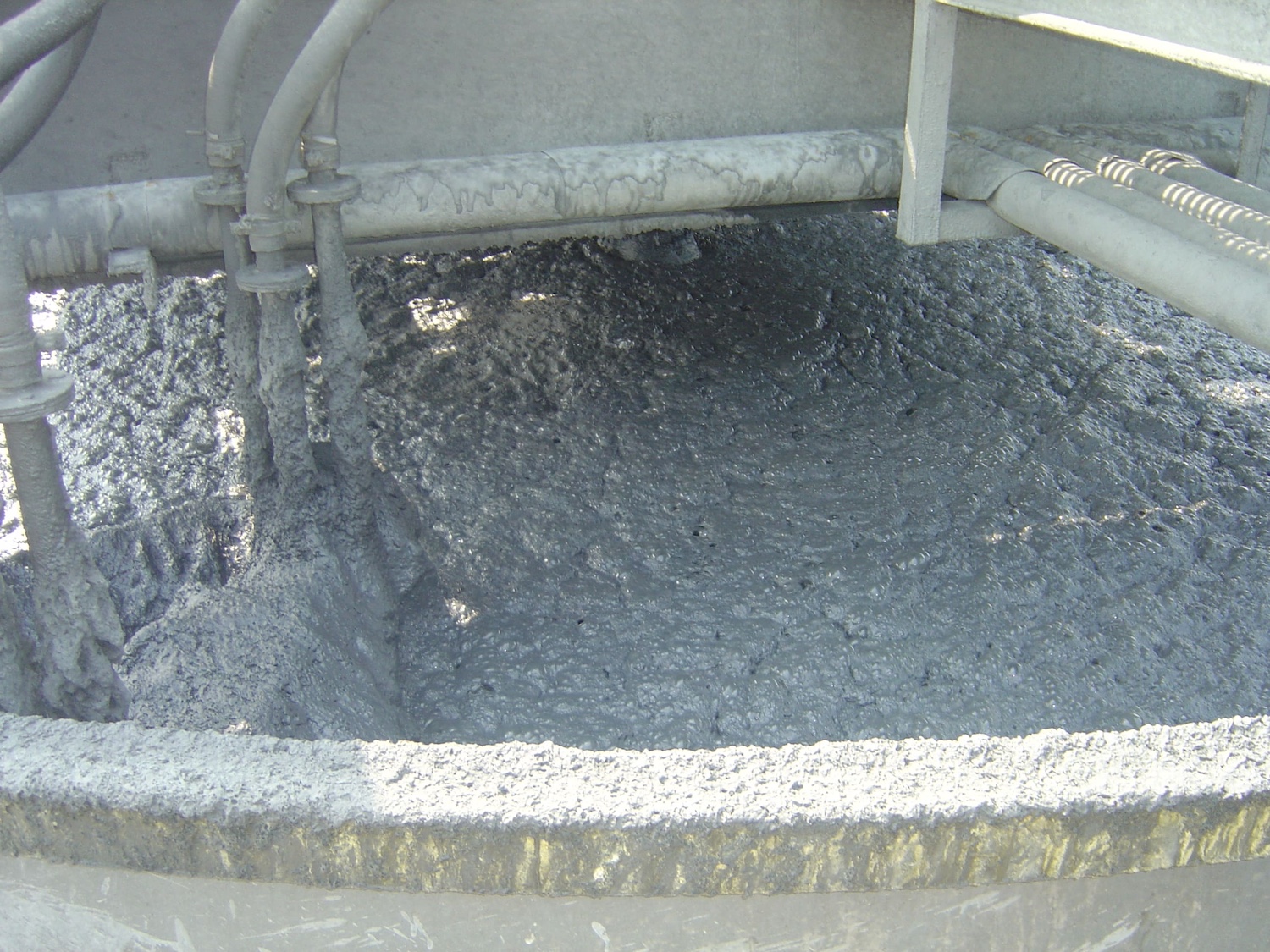
BacTech Environmental uses microbes to separate and stabilize impurities from gold ore, a process called bioleaching. (Image courtesy of BacTech Environmental.)
This article is part of our series on responsible mining solutions. The push for clean energy is fueled by growing demand for minerals. Conventional mining has a track record of harmful social and environmental impacts. Biomining is another potential solution to that problem.
Minerals are everywhere. Our blood is high in iron, bones are high in calcium, and a wide range of minerals like copper, nickel, and cobalt are essential to bodily functions.
We also need minerals to power the clean energy transition. We need lithium for rechargeable batteries, copper for almost all electric wiring, and a whole group of rare earth elements for other highly specialized jobs.
Don’t get nervous. I’m not suggesting we combine the ideas of the prior two paragraphs — let’s save mineral extraction from the human body for a dystopian sci-fi flick.
The point is that minerals are all around us and not exclusively in mine pits thousands of feet below the Earth’s surface. Minerals are in plants, seawater, air, garbage, and everything you see or touch.
The highest concentration of minerals is found in deposits beneath the earth’s surface, which is why we dig mines thousands of feet deep. But as those high-grade ores get depleted we have to start using low-grade ores, which means more work and higher costs to get less minerals. There are also substantial environmental and social costs from conventional mining that do not show up on the balance sheet.
“If we use traditional mining practices on low-grade ores, I think environmentally that will be horrible,” said Buz Barstow, assistant professor of biological and environmental engineering at Cornell University.
So, what can we do?
Call in the bugs
I don’t mean bugs in the creepy-crawly sense of the word, but rather the microscopic kind. One little guy on his own is utterly useless, but gather a few billion of his closest mates, and they can get into the nooks and crannies of low-grade ores, breaking them up to release the desired metal.
“Biomining provides about 15 percent of the world's copper and about 5 percent of the world's gold,” Barstow said.
At the world’s largest copper mine in Chile, a microbe solution is added to the low-grade ore waste piles. The bugs break up the ore and liquid copper, which filters down into a basin where they can collect and process the metal.
“It's actually called the world's biggest bioreactor. You can see this pile from space,” Barstow said. “It’s huge. It’s like 125 meters high, one kilometer long, and God knows how wide.”
One study suggests the surface area of the copper waste pad is about four square miles. That’s like 2,000 football fields, or one and a half Central Parks in New York City. And remember, the pile is about 400 feet tall.
While the bugs that work on this tectonic pile of rock are naturally occurring, the quantity and high concentration of them are not.
“I could not imagine that it is free of environmental impacts — it’s not mild in any way,” Barstow said. “But my feeling is that it will always be better than conventional methods. It’s probably one of the better choices that we have.”
This process, called bioleaching, produces byproducts like sulfuric acid that, if not handled properly, can spill into natural waterways. Managing environmental impacts is a point of intrigue for businesses and researchers, as is expanding this microbe’s palette beyond its steady diet of copper ore.
“The problem is that the bug is really good at working with ores that contain copper, but it's not very good with any other ore,” Barstow said. “And there are no other microbes in nature that can dissolve all the other types of minerals.”
Barstow and his team at Cornell are working to genetically alter and engineer new microbes that can be used to target the low-grade ores of other metals, beyond just copper.
This bug’s an expert gold miner
While gold isn’t vital to the clean energy transition, it plays a big role in making the capitalist world go round. And after catching wind of current economic uncertainties, some microbes decided to hedge their investments by acquiring gold.
One company that has had luck interacting with these gold-loving microbes is BacTech Environmental. The company uses microbes to separate and stabilize impurities from the gold ore, mainly arsenic.

When gold is mined, arsenic and other minerals are often bound to the gold. These impurities reduce the value of the gold because it takes more processing to purify it. The purification process is chemical intensive and often involves cyanide, nature’s nasty kryptonite.
BacTech’s microbes don’t circumvent the use of cyanide in processing, but they sort of crack the gold ore open so that more gold can be retrieved with less chemical input. Because of this, the gold ore can be sold at a higher value.
BacTech’s CEO, Ross Orr, explained this situation using a case in Ecuador where the company is exploring development. “Chinese companies used to pay 65 to 70 cents on the dollar for gold here,” Orr said. “Then, the Chinese government imposed an import tax on high arsenic gold concentrates like they did in the copper market … This was passed on to the miners who are now getting 45 to 50 cents on the dollar. Using our biotechnology, we can get them back to what they were earning before.”
While BacTech’s solution does not drastically change the negative impacts of extracting gold ore from the earth, it does prevent arsenic from finding its way into tailings ponds and waterways — a common byproduct of downstream gold purification processes.
Other fascinating applications of microbial mining might
Amidst the depletion of high-grade ores and the heightened awareness around the negative impacts of mining, new companies are exploring the biomining world to find practical, economically viable and environmentally friendly solutions.
One of those companies, Transition Biomining, is looking at ways to improve copper bioleaching practices. It recognizes that every pile of rocks has its own little microbiome, or microbial society.
The company analyzes these distinct microbiomes and, given their composition, adds specific catalysts, or biostimulants, that are uniquely suited to invigorate the microbes.
“Our method works with these native microbial communities, enhancing their natural abilities rather than attempting to override or replace them,” said Sasha Milshteyn, founder and CEO of Transition Biomining. “By increasing resource utilization and reducing waste, we can make lower-grade ores economically viable to process with a lower environmental footprint.”
Another company, Maverick Biometals, uses artificial intelligence (AI) to create enzymes that break down the silicate crystal structures that make up many different rocks and minerals.
“Our AI model precisely fits the enzyme binding pocket to the specific shape of the crystal structure, like a hand fitting into a glove,” said Eric Herrera, CEO at Maverick Biometals. “This allows it to be hyper-specific in what it breaks down.”
Using this process, Maverick can extract about 99 percent of the lithium from minerals within 48 hours — all at a processing cost lower than conventional chemical methods. Maverick’s method creates a silica gel byproduct that is non-toxic and generally harmless. It plans to build a plant at a mine site in the coming years to produce lithium and another metal called strontium.
Can microbes power the clean energy transition?
Right now, no. In the future, probably, in part.
One big challenge these young companies face is the reluctance of the mining industry to embrace new technologies. Even when results show increases in efficiency and value, the industry can be hesitant to try something new.
“This hesitancy also makes it difficult to access the variety of ore samples needed for comprehensive research and development,” said Milshteyn of Transition Biomining.
All in all, it is a fascinating world at the microbial level and the applications of these microscopic crawlers are truly astounding. While they are not poised to take over the supply chain of all transition minerals, they are certainly willing to help. If you’re a microbe that eats nothing but copper ore, you ought to be thrilled with what the future has in store.

Andrew Kaminsky is a freelance writer with no fixed location. He travels all corners of the globe learning about the different groups that call this planet home, seeing natural wonders, and sharing laughs with the people he finds along the way. An alum of the University of Winnipeg's International Development program, Andrew is particularly interested in international relations and sustainable development. In his spare time you are likely to find Andrew engaging in anything sport-related, or finding common ground with new friends over a craft beer.














